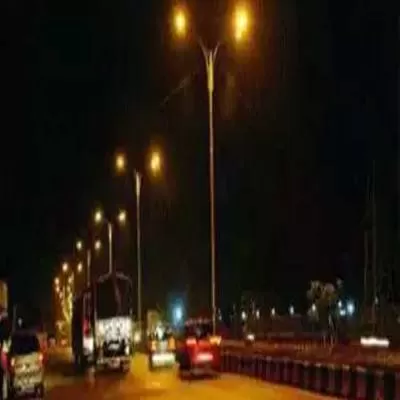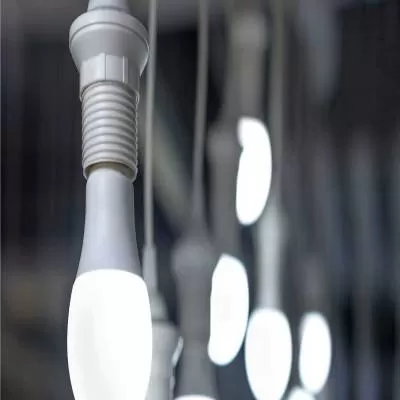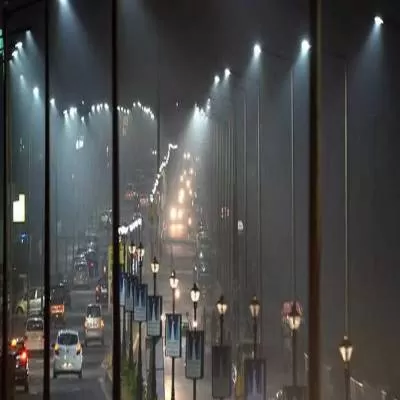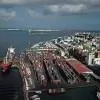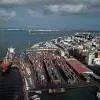- Home
- Building Material
- Lighting
- The conversion of streetlights into LED is a major project in the next fiscal
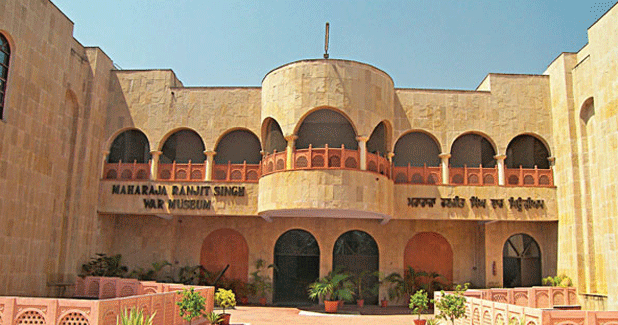
The conversion of streetlights into LED is a major project in the next fiscal
In June 2014, Pradeep Agarwal took over as municipal commissioner of Ludhiana, Punjab´s largest city corporation. It was his first assignment with a local government. Following the Lok Sabha elections, Agarwal´s first priority was to restart all the work that was on hold. Next came service delivery; in Punjab, the Right to Service Act has already been enacted. Also, under his guidance, a single-window system has been initiated in most offices; there are four main zonal offices and 11 or 12 sub-zonal offices. One major challenge, though, is the provision of adequate water supply and sewerage facility. As he plans for the future, Agarwal discusses the development opportunities in the city in conversation with SHRIYAL SETHUMADHAVAN.
How is the corporation contributing towards the government´s Swachh Bharat Abhiyan?
The mission has created great awareness among the people. This is one of the biggest requirements of the country because lack of civic sense is a major concern - 80 per cent of the problem can be solved if people start from their own home; the remaining 20 per cent can be solved by efficient monitoring and working by the corporation. We have tried to create awareness among the masses and brought NGOs in to work with the corporation. We are having ward-wise competitions to motivate workers within the corporation and are creating awareness in schools.
In terms of city development, what measures have you undertaken?
There are over 1 lakh street light points in the city at present and we plan to convert them all into LED lights. Tenders are yet to be floated. To begin with, as a pilot, we converted about 100 lights into LED six months ago and conducted a study on the resultant energy saving to create an efficient plan for the entire city. Also, the World Bank has conducted a study to provide the city surface water 24 x 7; at present, water supply comes through tube wells. We have prepared the plan and the World Bank has submitted its feasibility report. Also, Ludhiana has just 10-12 per cent of storm sewers. A technical feasibility study is being done by the World Bank and we are expecting the report in coming months.
Also the corporation plans to install intelligent systems in Ludhiana city buses. What is the status on this?
We do have city buses and had engaged an operator too, but unfortunately this did not succeed. We have given a tender to run the buses on net cost basis. So we will now allot the work and then go in for an intelligent system. We have a GPS system installed in the buses. This system needs to be activated and a monitoring cell will be created.
Please introduce us to the JNNURM projects being executed.
There are three projects at present, including 100 per cent sewerage. This project is worth about Rs 300 crore and about 85-90 per cent of work has been completed. Another is a solid waste management project with a budget of about Rs 100 crore sanctioned by the government under JNNURM. Further, about 4,832 houses are being constructed for the urban poor and this project is expected to be completed by March 31, 2015. Moreover, we have received about 170-odd city buses under JNNURM.
Are there any upcoming opportunities for vendors, contractors and developers?
Major projects include providing 24 x 7 surface water supply to citizens, creating proper drainage and upgrading major roads. We have about eight to nine major roads in the city and may consider upgrading these in the next financial year. As mentioned, the conversion of street lights into LED is going to be a major project in the next fiscal. We will also consider the construction of one or two multi-storey parking facilities. This could be an opportunity for many stakeholders.
Any other landmark project you would like to mention?
Among many others, we have just completed a railway-under-bridge at a construction cost of about Rs 40 crore. There is one project at the planning stage and yet to be finalised. We are planning to give all the basic facilities the corporation is offering at present to a private vendor. This will include 24 x 7 facilities like water supply, sewerage, etc. We can hire one private company to put up its infrastructure, take all the complaints and tackle all the problems within 24 hours or the minimum possible time. So in three to four areas like water supply, sewerage, horticulture, we plan to bring some private people on a PPP mode or something similar. Another project relates to a drain that passes through Ludhiana called Bhudda-Nala. There are many sewers being mixed with the Bhudda-Nala and we have hired Engineers India Ltd (EIL) to prepare a DPR to solve the problem. The work order has been given and it will submit its report in the next couple of months and then we will issue the tender for it. That project cost would be about Rs 800-900 crore.
What is the annual amount budgeted for city development? And does funding support come from other agencies?
Last year, the corporation´s budget was over Rs 1,000 crore (including loans). If you eliminate loans, it is about Rs 700-odd crore. If we include JNNURM and other external loans, the annual budget is about Rs 1,300 crore.
As far as the corporation´s own income is concerned, it is not more than Rs 200-odd crore. Most of the budget is contributed by the state, which is actually not the grant from the government but the share of the corporation that it is supposed to collect from the government. For instance, initially we had octroi, which the corporation used to collect by itself. This was eventually abolished and the government has been giving the share of collection. So about Rs 300-400 crore is there in that account and some other shares and different taxes, etc, make it about Rs 700 crore.
In your new role as municipal commissioner, what is your ultimate vision for city?
Urban development is a vast area. I cannot set everything right but my basic focus remains to offer the people services in an efficient manner. This includes bringing in e-governance so people can avail of most of the services at home instead of coming to the corporation. For instance, if you have any complaint in your surroundings, you can click a picture on the Android application and upload it on the corporation site. The corporation will then rectify the issue as soon as possible. Such applications also create awareness among people about civic amenities and culture.
- Pradeep Agarwal, Commissioner, Ludhiana Municipal Corporation In June 2014, Pradeep Agarwal took over as municipal commissioner of Ludhiana, Punjab´s largest city corporation. It was his first assignment with a local government. Following the Lok Sabha elections, Agarwal´s first priority was to restart all the work that was on hold. Next came service delivery; in Punjab, the Right to Service Act has already been enacted. Also, under his guidance, a single-window system has been initiated in most offices; there are four main zonal offices and 11 or 12 sub-zonal offices. One major challenge, though, is the provision of adequate water supply and sewerage facility. As he plans for the future, Agarwal discusses the development opportunities in the city in conversation with SHRIYAL SETHUMADHAVAN. How is the corporation contributing towards the government´s Swachh Bharat Abhiyan? The mission has created great awareness among the people. This is one of the biggest requirements of the country because lack of civic sense is a major concern - 80 per cent of the problem can be solved if people start from their own home; the remaining 20 per cent can be solved by efficient monitoring and working by the corporation. We have tried to create awareness among the masses and brought NGOs in to work with the corporation. We are having ward-wise competitions to motivate workers within the corporation and are creating awareness in schools. In terms of city development, what measures have you undertaken? There are over 1 lakh street light points in the city at present and we plan to convert them all into LED lights. Tenders are yet to be floated. To begin with, as a pilot, we converted about 100 lights into LED six months ago and conducted a study on the resultant energy saving to create an efficient plan for the entire city. Also, the World Bank has conducted a study to provide the city surface water 24 x 7; at present, water supply comes through tube wells. We have prepared the plan and the World Bank has submitted its feasibility report. Also, Ludhiana has just 10-12 per cent of storm sewers. A technical feasibility study is being done by the World Bank and we are expecting the report in coming months. Also the corporation plans to install intelligent systems in Ludhiana city buses. What is the status on this? We do have city buses and had engaged an operator too, but unfortunately this did not succeed. We have given a tender to run the buses on net cost basis. So we will now allot the work and then go in for an intelligent system. We have a GPS system installed in the buses. This system needs to be activated and a monitoring cell will be created. Please introduce us to the JNNURM projects being executed. There are three projects at present, including 100 per cent sewerage. This project is worth about Rs 300 crore and about 85-90 per cent of work has been completed. Another is a solid waste management project with a budget of about Rs 100 crore sanctioned by the government under JNNURM. Further, about 4,832 houses are being constructed for the urban poor and this project is expected to be completed by March 31, 2015. Moreover, we have received about 170-odd city buses under JNNURM. Are there any upcoming opportunities for vendors, contractors and developers? Major projects include providing 24 x 7 surface water supply to citizens, creating proper drainage and upgrading major roads. We have about eight to nine major roads in the city and may consider upgrading these in the next financial year. As mentioned, the conversion of street lights into LED is going to be a major project in the next fiscal. We will also consider the construction of one or two multi-storey parking facilities. This could be an opportunity for many stakeholders. Any other landmark project you would like to mention? Among many others, we have just completed a railway-under-bridge at a construction cost of about Rs 40 crore. There is one project at the planning stage and yet to be finalised. We are planning to give all the basic facilities the corporation is offering at present to a private vendor. This will include 24 x 7 facilities like water supply, sewerage, etc. We can hire one private company to put up its infrastructure, take all the complaints and tackle all the problems within 24 hours or the minimum possible time. So in three to four areas like water supply, sewerage, horticulture, we plan to bring some private people on a PPP mode or something similar. Another project relates to a drain that passes through Ludhiana called Bhudda-Nala. There are many sewers being mixed with the Bhudda-Nala and we have hired Engineers India Ltd (EIL) to prepare a DPR to solve the problem. The work order has been given and it will submit its report in the next couple of months and then we will issue the tender for it. That project cost would be about Rs 800-900 crore. What is the annual amount budgeted for city development? And does funding support come from other agencies? Last year, the corporation´s budget was over Rs 1,000 crore (including loans). If you eliminate loans, it is about Rs 700-odd crore. If we include JNNURM and other external loans, the annual budget is about Rs 1,300 crore. As far as the corporation´s own income is concerned, it is not more than Rs 200-odd crore. Most of the budget is contributed by the state, which is actually not the grant from the government but the share of the corporation that it is supposed to collect from the government. For instance, initially we had octroi, which the corporation used to collect by itself. This was eventually abolished and the government has been giving the share of collection. So about Rs 300-400 crore is there in that account and some other shares and different taxes, etc, make it about Rs 700 crore. In your new role as municipal commissioner, what is your ultimate vision for city? Urban development is a vast area. I cannot set everything right but my basic focus remains to offer the people services in an efficient manner. This includes bringing in e-governance so people can avail of most of the services at home instead of coming to the corporation. For instance, if you have any complaint in your surroundings, you can click a picture on the Android application and upload it on the corporation site. The corporation will then rectify the issue as soon as possible. Such applications also create awareness among people about civic amenities and culture.


